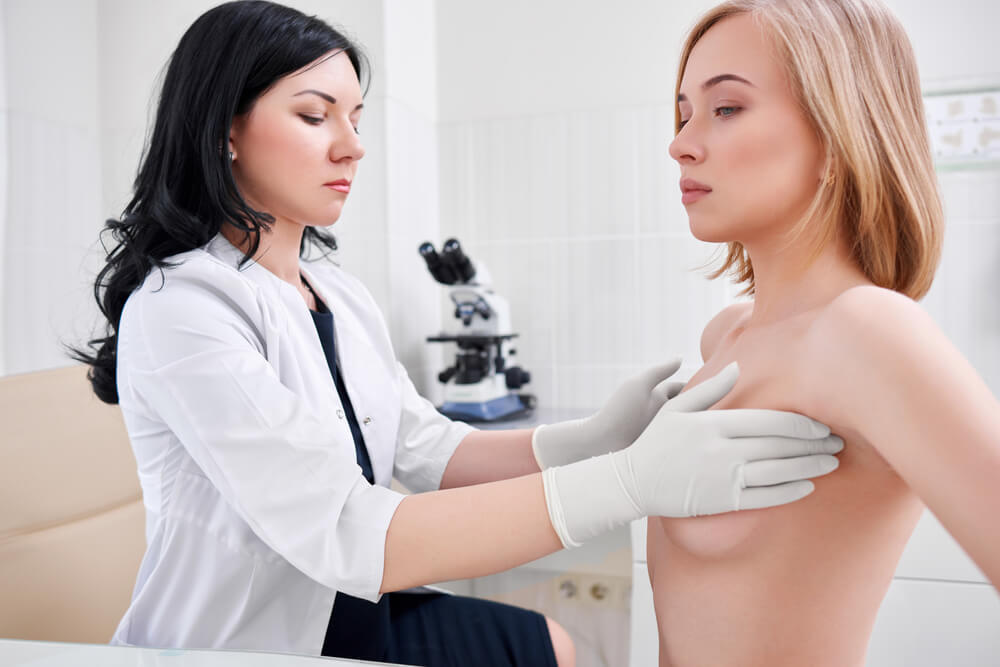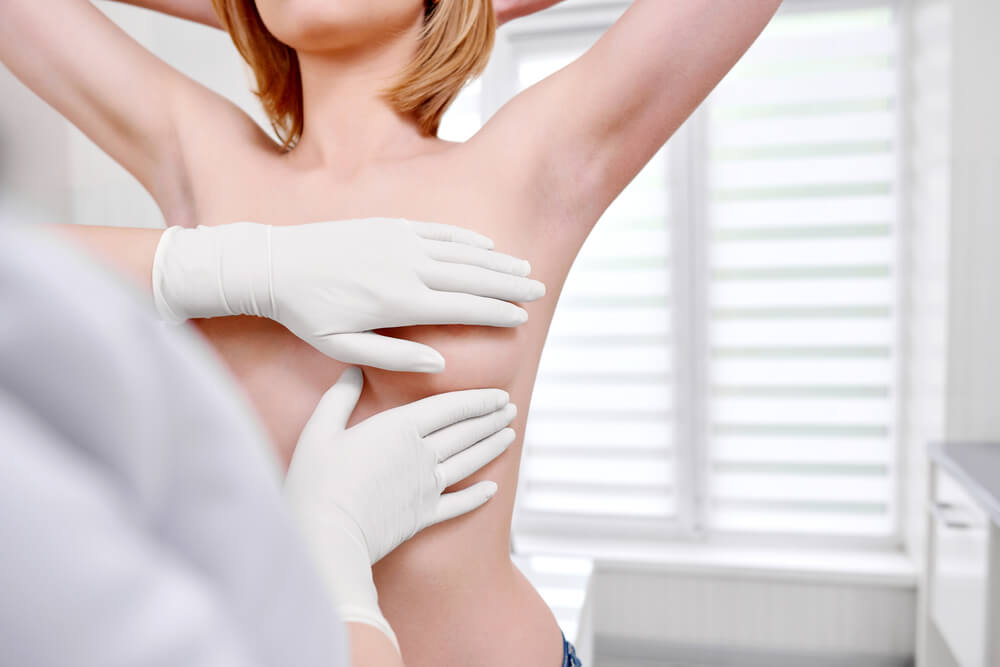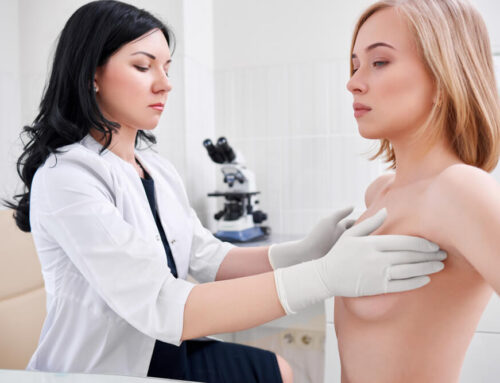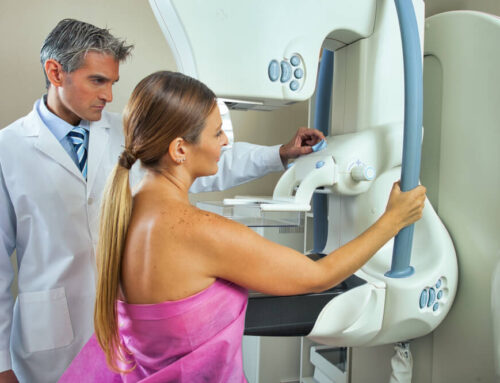Areola refers to the colored area on the breast, around the nipple. And just like breasts, they can have various shapes, colors, and sizes. When we talk about areola size, in particular, they can be as small as a penny, to the size similar to a slice of pepperoni, or as large as a salad plate. The color can also range from pale pink to deep brown. Areolas can point in different directions as well. While we will discuss potential causes of large areolas, it’s important to understand that there’s no such thing as normal or not normal when it comes to areola size, color, and shape. However, if you’re truly suspicious of the changes in your areolas, nipples, and breasts, don’t hesitate to come in for a breast evaluation and treatment at Breast Care Center Miami.
The Average Areola Size
Just like everyone’s breasts are unique, so are their areolas. However, if we talk about an average, it’s been found that the average areola diameter is about four centimeters. Basically, it’s about three times bigger than the nipple.
Still, even having areolas that are larger than the average can be perfectly normal. It’s crucial to note that the size and appearance of breasts and areolas tend to change during one’s lifetime. What’s more, hormonal fluctuations can also affect the look of breasts overall, which means it’s also normal to expect areola breast changes during pregnancy, breastfeeding, puberty, menopause, and even menstruation.
For instance, areola breast changes during pregnancy are affected by the production of the hormone that prepares the body for lactation and breastfeeding. In this case, it’s not uncommon for breasts, areolas, and nipples to become larger, and the areolas can even appear darker in color. Once the woman stops producing breast milk, the breasts should go back to a more or less previous state.
Keep in mind that the different areola colors are also normal. They can be very light but also rather dark. If the contrast between your skin and areolas is more prominent, it can make the areolas and nipples appear visually bigger. In general, people who have darker skin tone also tend to have darker areolas compared to people with lighter skin tone, but that’s definitely not always the case.
When to See a Doctor

Now that we have made it clear that big areolas are perfectly normal, it’s crucial to point out the situations where changes in areolas may actually warrant a visit to your doctor. As mentioned, having large areolas, having them change in size and color during the periods of hormonal fluctuations, and even the difference in size in each breast is typically not a reason to stress and worry. On the other hand, it would be best to visit a doctor if there’s anything that might be causing you discomfort, such as an itchy areola or noticing unusual bumps on the areola. The following conditions might be the issue.
Nipple Eczema
People who suffer from atopic dermatitis could also develop the so-called nipple eczema. However, this can happen even in people who don’t have atopic dermatitis. This usually affects both breasts, most commonly during breastfeeding. Basically, the areola and nipple skin may turn scaly and thick, which is sometimes accompanied by raised bumps on the areola. Some people also have an itchy areola issue with this condition.
Paget’s Disease of the Nipple
This is rare breast cancer that often affects just one breast/areola. It usually starts as one single bump that then gradually grows. This may cause an itchy areola followed by ulcers in the area.
Erosive Adenomatosis
An ulcerative nipple lesion located in the nipple area is known as erosive adenomatosis, which is a typically benign condition. While this condition is very rare, it might cause other benign tumors and bumps on areola to appear, which requires surgical treatment.
Subareolar/Periareolar Infection
As stated before, areola breast changes during pregnancy are normal, but it’s also important to mention that pregnant and lactating women could also be at higher risk of getting infections and abscesses around and beneath the areola. Aside from pregnancy and breastfeeding, it’s also possible to be affected by this in menopause. The person usually feels pain in their breasts. The breasts might also appear swollen, with or without a lump-like formation beneath the areola.
Can You Make Big Areolas Smaller?
While the reduction of large areolas is possible, it’s not exactly simple or easy. In case the appearance of your areolas causes you a great deal of emotional discomfort, make sure to get an appointment with a doctor and openly tell them everything you feel. Then you can discuss potential reduction options.
Areola Reduction Surgery

If you decide to go for an areola reduction surgery, keep in mind that the procedure is considered elective, meaning it has no insurance coverage.
During the procedure, the doctor will remove the colored tissue and then create a smaller areola with it. It will be necessary to get a permanent stitch inside the breast which will prevent future stretching of the areola. While some scars will be present, they won’t be too visible since the doctor makes the incisions at the new areola’s borders. The recovery and healing process don’t last too long.
When performed alone, it’s only necessary to receive local anesthesia. However, general anesthesia will be required if areola reduction is done together with other surgeries such as breast lift or breast augmentation.
Skin-Lightening Topicals
In order to make big areolas appear smaller, the good solution for your particular case may be to use certain skin-lightening creams on the area. Generally, products that are used for hyperpigmentation treatment, such as retinol and hydroquinone, are also effective for lightening the areolar area. Keep in mind that these products require long-term and consistent use to show visible results. Also, you should never buy these without having discussed it with your doctor first.
Skin-lightening products have become really popular in recent years, making them readily available over-the-counter and online. However, it’s not recommended to get these products online from another country, especially if you want to use them on sensitive areola skin. Namely, the allowed amount of skin-lightening agent differs from country to country and what may be considered safe for hyperpigmentation spots, in general, may not be as safe for breast use.
Just like breasts, areolas also differ in shape and size. Their color can vary from person to person as well. What’s more, breasts, areolas, and nipples tend to change their shape, size, and color throughout one’s lifetime, especially during times of significant hormonal changes. This includes regular monthly menstruation cycles too, and not only big events such as pregnancy, breastfeeding, and menopause. But, if you are concerned about the changes you notice in your areolas and breasts, and you’re actually faced with some discomfort because of these changes, don’t hesitate to reach out to your doctor. We at Breast Care Center Miami welcome you to ask questions and make an appointment whenever you find it necessary.






